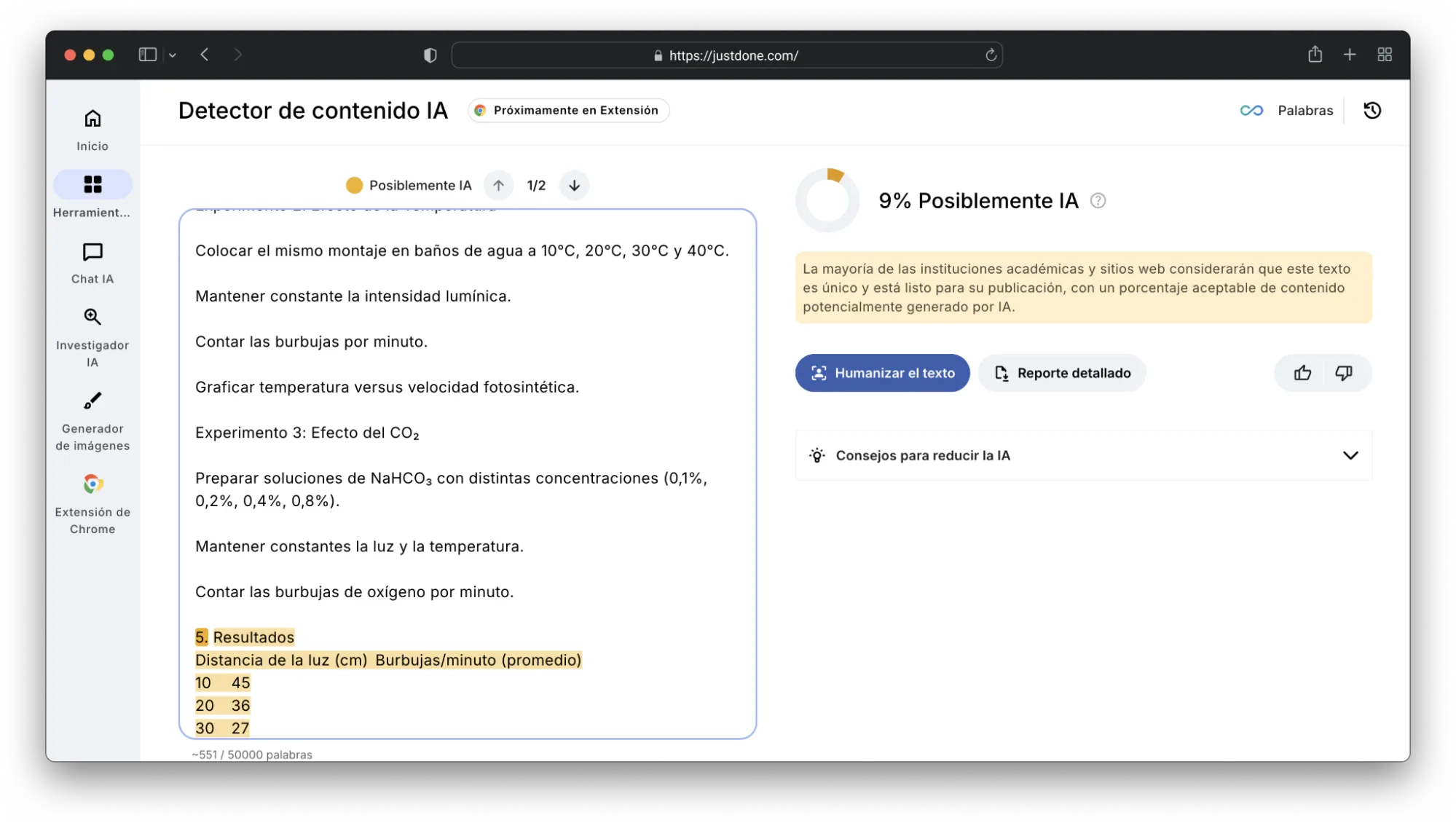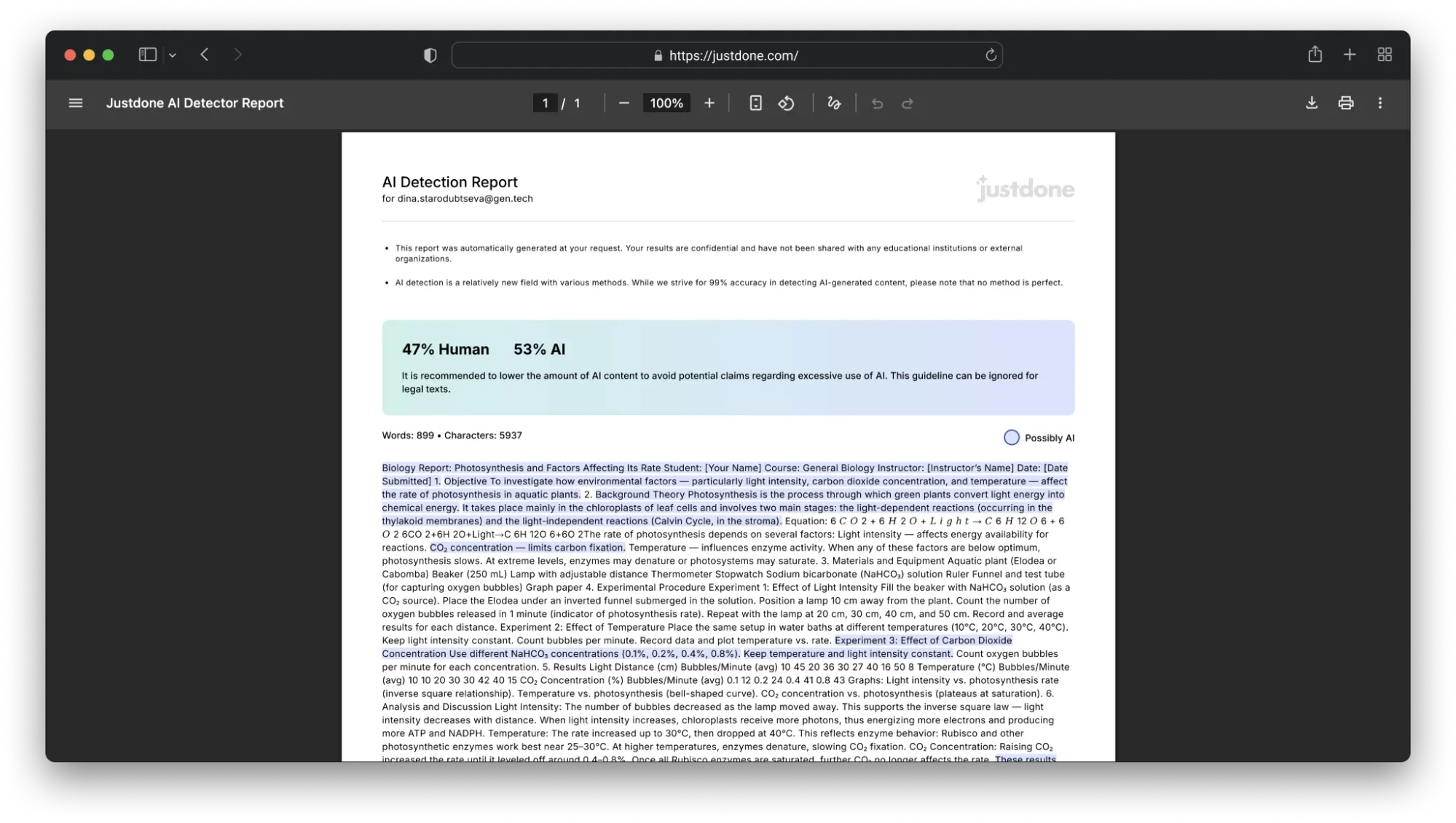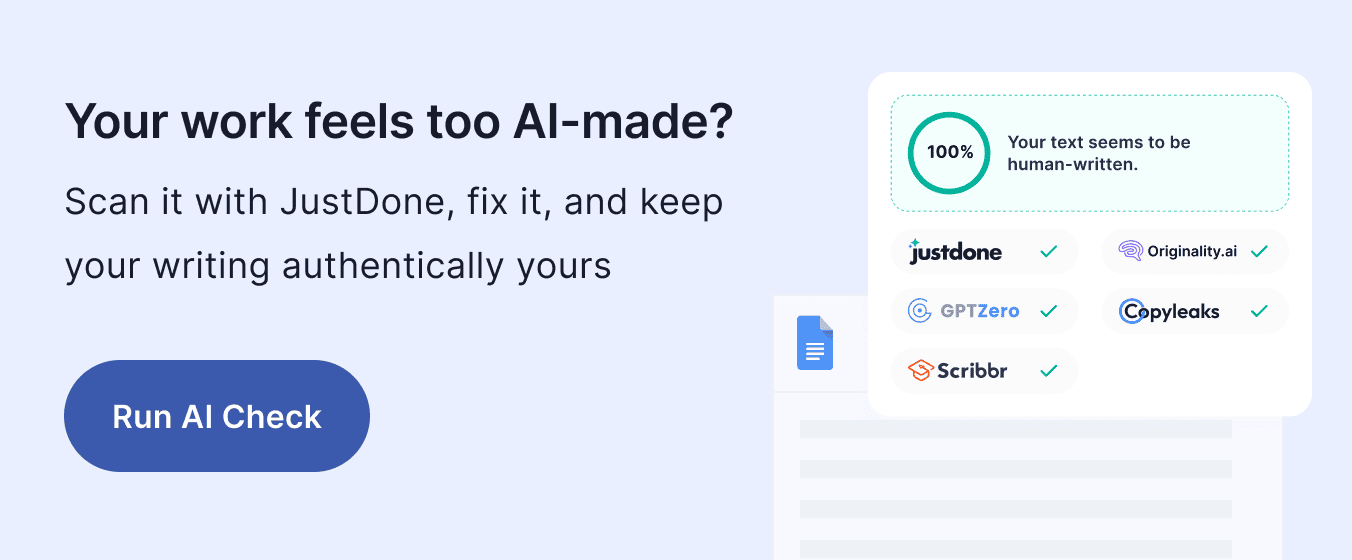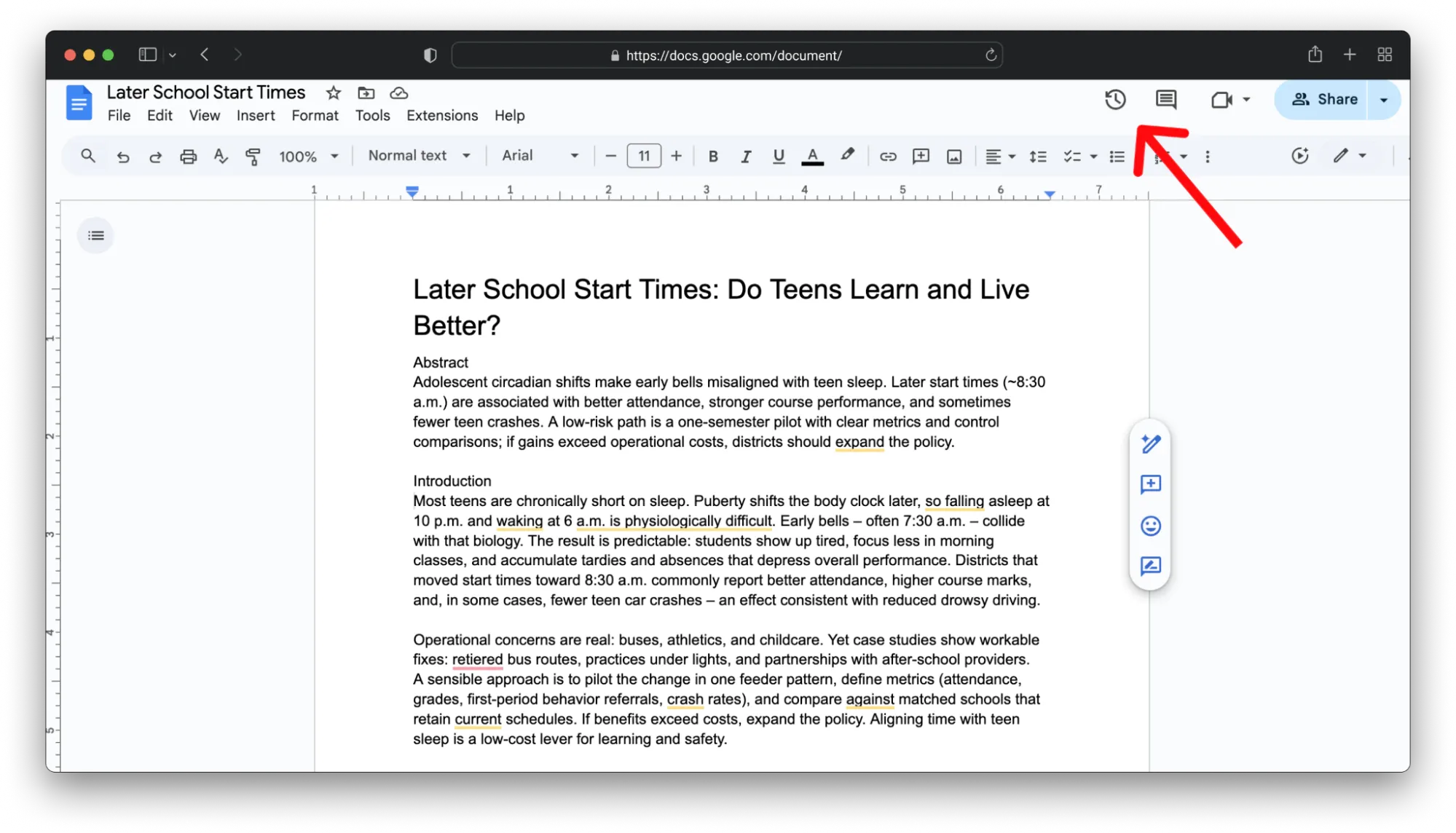Key takeaways
- Use JustDone to detect AI with Turnitin-level accuracy: it mirrors Turnitin’s sentence analysis and supports multilingual writing.
- Pair detectors for stronger verification: combine JustDone with tools like Copyleaks, GPTZero, or Originality.ai to cross-check results.
- Keep a writing trail to prove originality: save drafts, reports, and timestamps to show your work’s authenticity beyond AI detection.
Turnitin has become the silent gatekeeper of academic writing. Its reports decide whether a student’s essay or a researcher’s paper passes as original. But Turnitin isn’t open to everyone.
Students without institutional access, freelance academic writers, and independent researchers still need to prove their work is human. So, which public AI detector comes closest to Turnitin’s accuracy and logic? The answer depends on how well a tool can think like Turnitin. Not just detect AI, but also analyze writing behavior.
Let’s look at how Turnitin works, what makes it unique, and how other leading detectors compare in its accuracy.
How Turnitin Detects AI
Turnitin’s AI detector focuses on how sentences behave, not what they say. It uses models that analyze text predictability, structure, and rhythm. When writing is too smooth or repetitive, the system suspects AI.
In simple terms, it measures:
- Perplexity: How predictable each next word is.
- Burstiness: How sentence length and rhythm vary.
- Continuity: Whether transitions follow human-style logic.
For example:
AI-like: “Technology continues to transform every aspect of life.”
Human-like: “Technology changes what we do, but not always how we think.”
Both sentences are grammatically correct, but the second one feels more “human.”
It breaks rhythm, uses contrast, and shows perspective. These are the signals of natural thinking.
Turnitin scores each sentence and assigns a probability of being AI-generated. It highlights the parts of the text most likely written by a model, using color-coded results (blue for human, red for AI). It then adds a plagiarism check, so educators see both originality and authorship in one place.
That combination – deep linguistic modeling plus source verification – is why Turnitin remains the gold standard.
When You Need a Turnitin Alternative
Turnitin’s model is accurate but closed. It’s tied to university systems like Moodle and Canvas. Individual users can’t access it directly.
Even when you can, Turnitin isn’t built for multilingual or non-native English writing. If your syntax is clean and formal, it might misread your work as “AI-like.”
That’s why other detectors now aim to replicate Turnitin’s precision, but without the institutional barrier.
Which AI Detector Is Most Like Turnitin
In my testing across 6 detection tools, JustDone’s results were closest to Turnitin’s academic logic. I saw three main benefits that stood out when using JustDone as Turnitin’s alternative.
1. Sentence analysis
You see exactly where a sentence sounds too uniform or statistically predictable.
Flagged areas are explained with context. Not just red marks, but reasoning behind them.

2. Multilingual and non-native support
Many detectors over-penalize ESL writers because they use simpler sentence structures or consistent phrasing. JustDone is trained on multilingual data, which means it recognizes non-native syntax as human variation, not AI uniformity. For instance, here’s the screen of a biology report written in Spanish, almost with no AI. JustDone flagged only one technical paragraph, polished too heavily by ChatGPT-5.0.

3. Accessibility and simple workflow
You don’t need integration or institutional access. The workflow is simple: you upload or paste your content, click Detect AI, and get a breakdown with color-coded confidence levels.
From there, you can use Humanizer to rework robotic-sounding sections and export the output.
4. Clear reporting
Turnitin reports are dense and often technical. JustDone’s reports are readable and easy to apply. You can share them with editors or attach them to your own reports as proof of authorship. You see clearly what sentences are more likely to be AI, and those that are not so.

This balance – academic-level rigor and open accessibility – makes JustDone stand out for both professionals and students.
Other Closest Alternatives to Turnitin
While JustDone is the most balanced Turnitin alternative for me, a few other detectors work well too. Here’s how the leading AI tools compare:
| Tool | Closest Turnitin Feature | Ideal Use | Key Limitation |
|---|---|---|---|
| Originality.ai | AI + plagiarism detection combo | Publishers, SEO professionals | Pay-per-credit pricing |
| Copyleaks | Multilingual AI detection | Researchers, institutions | Complex interface |
| GPTZero | Burstiness and perplexity analysis | Students, teachers | Less accurate on long texts |
| Scribbr | Human-in-loop academic review | University students | High cost per scan |
| Paperpal | Grammar and AI detection blend | Researchers, journals | Limited transparency |
These are AI detectors used the most in colleges, so in some cases, they can substitute Turnitin as the first checks.
- Originality.ai. This is one of the first detectors designed for professional content creators. It combines AI and plagiarism checks, offering reports similar to Turnitin. However, its pricing model (per credit) makes it costly for frequent users. Accuracy on academic tone is solid, but it struggles with ESL phrasing.
- Copyleaks can analyze text in 30+ languages and supports APIs for institutional use. The depth of reporting is close to Turnitin’s, though the interface feels more technical than intuitive. To my mind, it’s a strong pick for schools, but not for freelancers.
- GPTZero is built around the same linguistic metrics as Turnitin – perplexity and burstiness. It’s simple, accessible, and fast. However, it performs best on short essays and struggles with long academic manuscripts or polished professional writing.
- Scribbr is focused on student needs. It pairs automated AI detection with optional human feedback, giving it credibility in academic contexts similar to Turnitin. The downside is its price and turnaround time, so it’s not ideal for daily checks.
- Paperpal is used widely by journal publishers and, like Turnitin, provides AI-based assessment of text quality. It integrates grammar, clarity, and AI detection in one workflow. However, its reports are less transparent: you see a final score but not detailed reasoning per sentence.
Across all of these, JustDone combines the strongest mix of transparency, fairness, and usability. But in fact, each of these detectors captures part of Turnitin’s approach, but not its full structure. None integrates plagiarism matching, sentence-level scoring, and readability analysis in one unified report the way Turnitin does.
Sometimes, pairing tools can help. For instance, you can use JustDone for writing-level clarity and multilingual detection, then double-check the result through Copyleaks or Originality.ai.

Authorship Without Turnitin
Even the best detector (Turnitin included) doesn’t prove authorship. It estimates probability. The best approach is to write transparently and test your work several times.
If your writing is questioned, the strongest proof of originality is your process evidence. Here’s the workflow I recommend for both students and other professionals:
- Adjust style if needed.
Remember, in some cases (technical papers, lab reports, or formal style), JustDone can show false-positive or false-negative results. If it’s possible, rewrite the flagged parts to make sure you’re safe. - Save detection reports as documentation.
The best recommendation is to save and screen everything during writing. These are your proofs. - Keep drafts and timestamps for reference.
The same is here. When your writing has history, it means you didn’t simply copy-paste AI-generated content. Even if you used AI for a draft, show how hard you worked and how much you did before submit.

This combination (human drafting, AI verification, and process tracking) creates a strong record of originality. Institutions respect process. A clear writing trail demonstrates intent and effort, which is something no AI can fake.
Turnitin-Level Accuracy with Public AI Detectors
Turnitin remains the academic benchmark, but it isn’t available to everyone. JustDone brings Turnitin-level logic, multilingual fairness, and transparency to open users. It’s accurate, academic, and accessible, and that makes it the best alternative to Turnitin AI detector. Other detectors, such as Copyleaks, Originality.ai, GPTZero, and Scribbr, can support specific needs, but none combine usability, fairness, and detailed language logic as effectively as JustDone. However, no detector is 100% accurate. Your writing history, reasoning, and process matter the most. The smartest approach is to use detectors as partners, quietly verifying what your own work already proves.